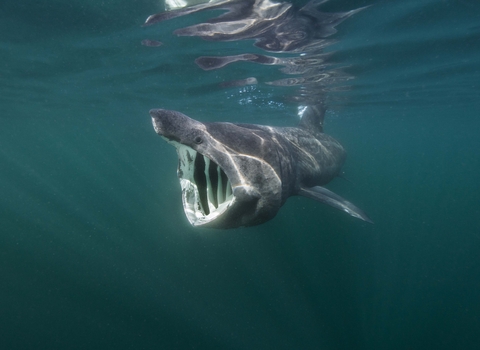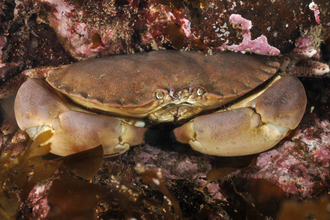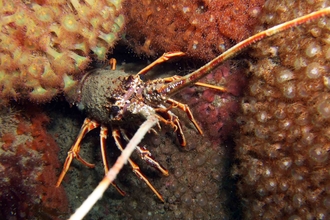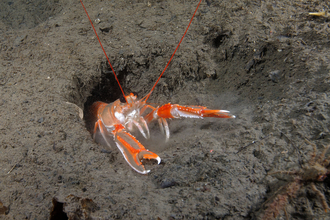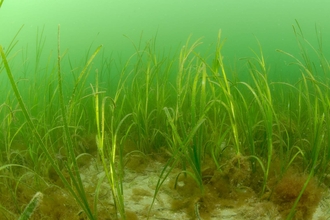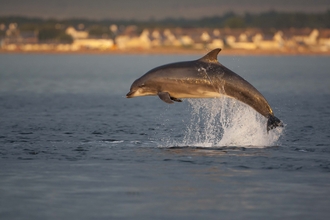England – Marine Conservation Zones
In England, nationally important habitats and species are protected through Marine Conservation Zones (MCZs). The UK Government designated the MCZ network through a phased approach and designated the first 27 sites at the end of 2013.
A further 23 sites were designated at the start of 2016, bringing us up to 50 MCZs in English and Secretary of State waters.
In June 2018 the Government announced its ambition to create 41 more conservation zones in the seas around England and a consultation took place asking the public to share views on these new sites. The Wildlife Trusts launched the Wave of Support campaign to encourage people to have their say and received over 22,000 responses calling for better protection of our seas!
The result of this action by The Wildlife Trusts and others has been the designation of a third round of Marine Conservation Zones in 2019 consisting of 39 MCZs in English waters and further 2 sites designated in Northern Ireland.
Taken together this network of MCZs around the UK will go a long way in helping to protect and conserve important marine habitats and wildlife for the future. However, we need to make sure that these sites are managed correctly, to give our ocean wildlife the best possible chance of recovery.
Joan Edwards, Director of Living Seas and Public Affairs shares her thoughts on the long road The Wildlife Trusts have undertaken to help secure Marine Conservation Zones around the UK.
You can stay up to date on the progress of our Marine Conservation Zones and get an exclusive monthly newsletter, packed with marine conservation news from around the world and exciting wildlife sightings, by becoming a Friend of Marine Conservation Zones.
Highly Protected Marine Areas
Highly Protected Marine Areas (HPMAs) are a new type of marine conservation zone designed to protect and recover marine ecosystems.
They give nature the best chance of recovery by safeguarding special areas with the best possible protections. All damaging activities, such as fishing, construction, digging and similar are banned. But don’t worry, they are not ‘no-go zones’! We can still enjoy these special places through all non-damaging activities, such as swimming, kayaking, scuba diving and surfing.
Explore our Marine Conservation Zones
Click on any of the sites on our interactive map to learn more about the MCZs in our seas.
Newly designated Marine Conservation Zones
These 41 special sites are the most recently designated MCZs. Click on a name to learn more about the wildlife the site helps protect.
Northern North Sea
Berwick to St Mary's
Southern North Sea
Holderness OffshoreKentish Knock EastMarkham's TriangleOrford InshoreSwanscombe
Eastern Channel
Albert FieldAxe EstuaryBeachy Head EastBembridgeDart EstuaryEast of Start PointForelandGoodwin SandsInner BankOtter EstuaryYarmouth to CowesPurbeck CoastSelsey Bill and the HoundsSouth of PortlandSouthborne RoughStudland BayWest of Wight-Barfleur
Western Channel
Camel EstuaryCape BankDevon Avon EstuaryErme EstuaryHelford EstuaryMorte PlatformNorth West of LundyNorth-East of Haig FrasSouth of Celtic DeepSouth of the Isles of ScillySouth-West Approaches to Bristol ChannelSouth-West Deeps (East)
Irish Sea
Queenie CornerRibble EstuarySolway FirthSouth RiggWest of CopelandWyre-Lune
European Marine Sites
European Marine Sites are areas at sea protected for special wildlife and natural habitats of European importance.
These include Special Areas of Conservation (SACs) and Special Protection Areas (SPAs), which together form part of a Europe-wide network of protected areas on land and at sea (the ‘Natura 2000’ network) designed to safeguard the wildlife most at risk. In England, Natura 2000 sites include such iconic areas as Flamborough Head in Yorkshire, and Lyme Bay in Devon.
Both SACs and SPAs play a critical conservation role by providing wildlife refuges for nationally threatened species and habitats. They are a key part of a network of Marine Protected Areas in UK waters.
What's a Special Area of Conservation?
Special Areas of Conservation (SACs) are areas which have been given special protection for their habitats and species. They provide increased protection to a variety of wild animals, plants and habitats and are a vital part of global efforts to conserve the world’s biodiversity.
Coastal and marine SACs in England include Lyme Bay in Devon and the Humber Estuary between Yorkshire and Lincolnshire. Further information about SACs in England, including a full list of sites, is available on the JNCC website.
What's a Special Protection Area?
SPAs are areas identified as of international importance for the breeding, feeding, wintering or migration of rare and vulnerable species of birds.
Coastal SPAs in England include Gibraltar Point (Lincolnshire), Pool Harbour (Dorset) and the kittiwake-covered cliffs of Flamborough Head (Yorkshire). Further information about SPAs in England, including a full list of sites, can be found on the JNCC website.

